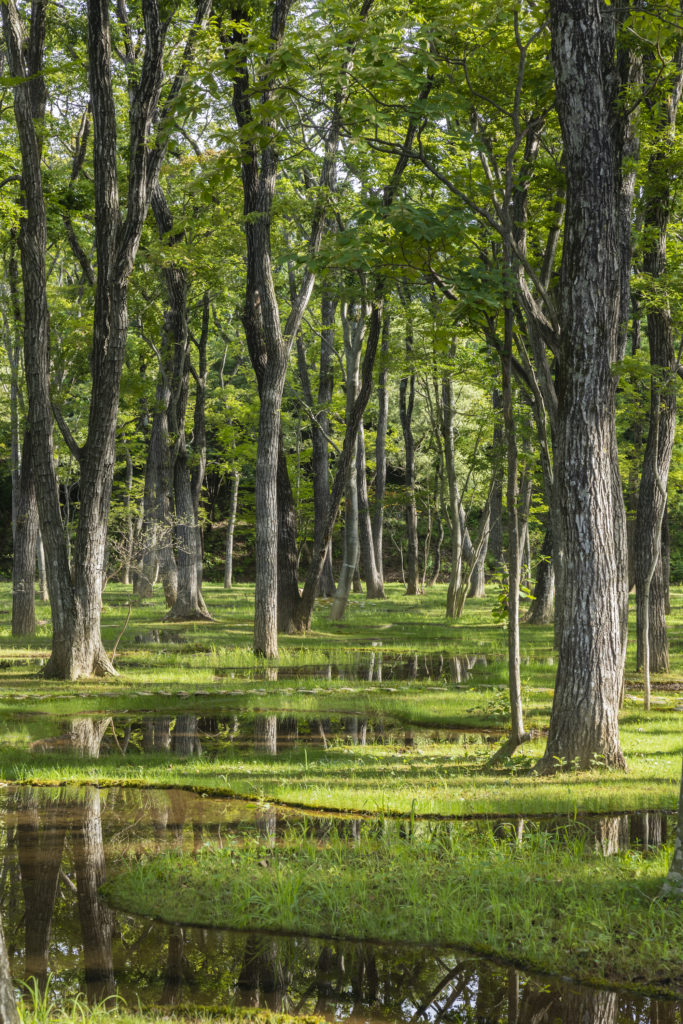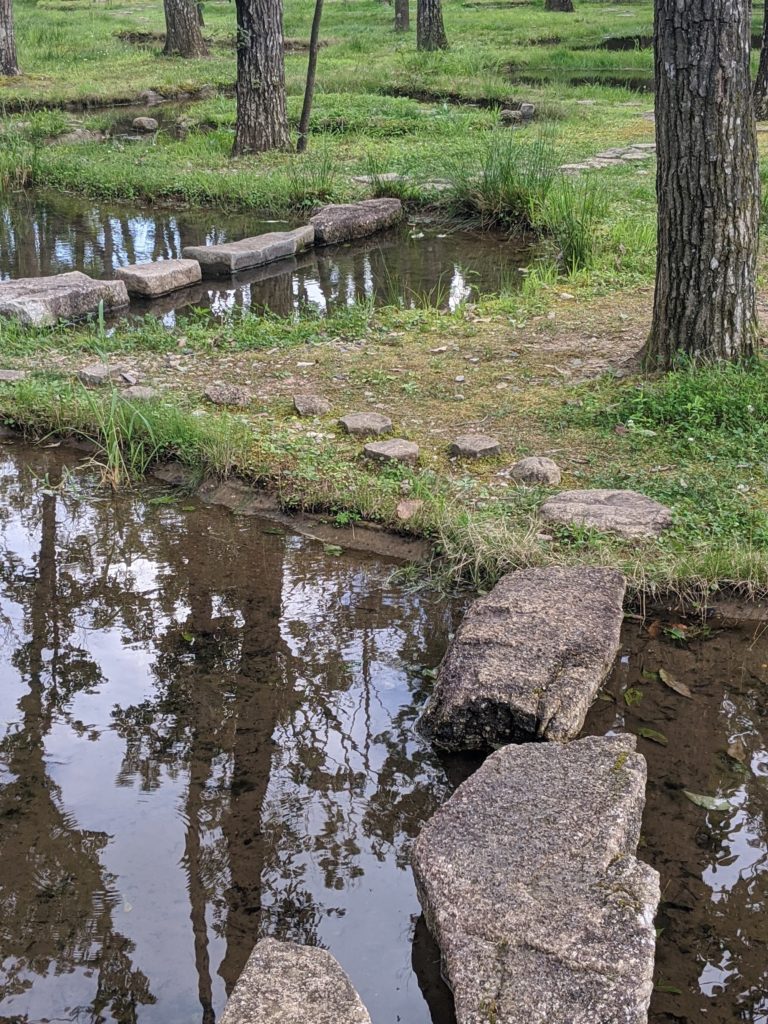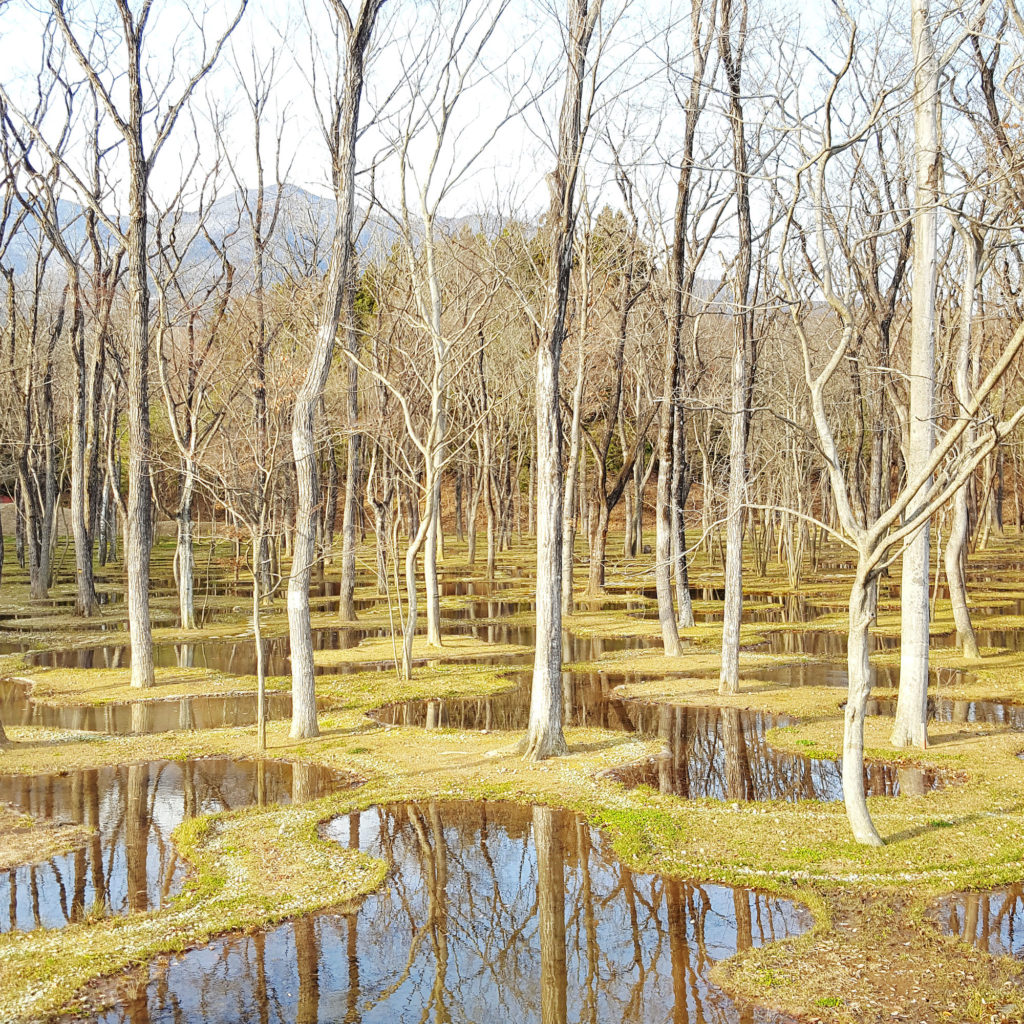At the Northern limit of the Kanto region, a landscape installation at Art Biotop Nasu blurs the line between the natural and manmade, suggesting a new alternative for Japanese garden design.
According to “Sakuteiki” (the oldest Japanese book about landscape gardening written in the Heian Period) gardens are meant to reform the natural world into “human living spaces.” Rather than an attempt to tame or reproduce a wild natural environment, they are a device to harmonise the relationship between humans and nature.
Mizuniwa, a water garden designed by acclaimed young architect / artist Junya Ishigami, explores this idea through a distinct approach. In contrast to the more formal and symbolic gardens often seen in the grounds of temples and palaces, the project assembles the natural materials already found at the site into an abstract sensory experience.
Combining trees, water and moss with a careful interpretation of the site’s human history and existing ecosystem, a new landscape emerges. The result is a quiet, reflective space that feels both strange and familiar.

On first impression, the collection of 160 shallow ponds (called ‘biotopes’) scattered between tall spindly tree trunks seems a far cry from the considered aesthetic of garden design in Japan. Yet there is an undeniable sense of balance, and the underlying structure fits the description by the Shōwa poet Kenji Miyazawa of landscape design as, “dressing the scenery, redesigning it, and making higher-order hidden in nature visible.”
Each element of the garden is precise and a result of observing the natural and man-made forces at the site. Formerly satoyama (the boundary space between mountainous and arable land), the arrangement of the garden references the human-influenced planting patterns of forestry and rice paddy irrigation systems that have directly transformed the landscape.
At 16,870㎡, the garden is larger than Tokyo Dome, but it feels compact. 318 trees – all between 10-14m in height and reflective of the diversity of plant life produced by the rich soil and climate of the Nasu volcanic belt – have been carefully transplanted from the adjacent site. The watery ‘biotopes’ that weave between the trees are sized relative to the density of the tree canopy above, growing larger as you move towards the center. The nearby Kamikuro river feeds the reticulated ponds, providing a freshwater habitat for tadpoles, dragonflies and other insect-life.

A stepping stone path meanders along the mossy forest floor between the trees and water. The spacing and size of these stones has been carefully laid out to affect the movement of the visitor through the garden to create moments of tension and release. The resulting landscape feels like a succession of exterior corridors and rooms that envelop the visitors in a “human living space.”
Now two years since its creation, the garden’s natural growth is slowly eroding the carefully scribed edges of the ponds. The subtlety of the design intervention will increase as nature takes hold, making the human hand of the designer harder to read. But the consideration paid to how the experience will change over time, and the careful choreography of the paths will continue to impart a human trace that questions the imaginary line separating the world of man, and nature.












